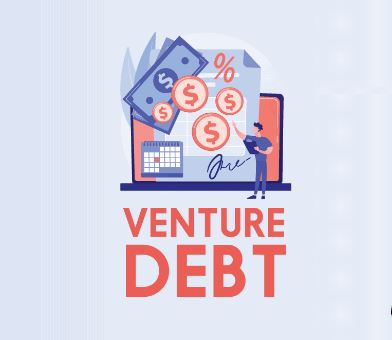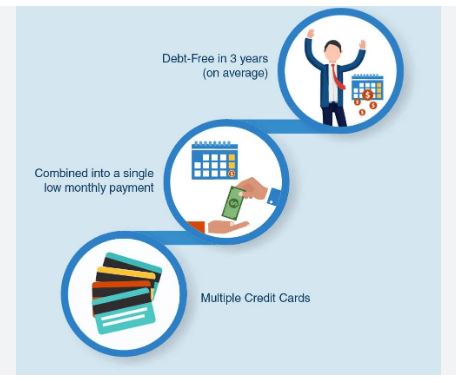Starting a business is a journey filled with challenges and opportunities. One crucial challenge is securing the necessary funding to fuel growth. Venture debt has emerged as a strategic financial instrument that savvy founders utilizes to accelerate their startup’s expansion.
This phenomenon begs the question: what exactly is venture debt, and why is it becoming a go-to for innovative startups?
Let’s explore why embracing venture debt could be a game-changer for your burgeoning enterprise.
What Is Venture Debt?
Venture debt is a specialized form of financing designed to aid startups with significant growth potential yet minimal assets for traditional loan collateral. It’s a nuanced tool for companies in their nascent stages, providing them with the capital they require without the stringent preconditions of standard loans.
This financial instrument is generally provided by niche banks or non-bank entities and often involves a blend of a loan and warrants, which may convert into equity at a future date.
Venture debt allows for the versatile application of funds, whether for amplifying business operations, extending the financial runway, or acting as a cushion between equity funding rounds.
It’s most beneficial for businesses that have already attracted venture capital, signaling a foundational endorsement and financial belief in the company’s vision.
- Symbiosis with equity funding enabling capital boosts without diluting ownership excessively.
- Often structured as a loan coupled with warrants for potential future equity.
- Particularly tailored for startups with some level of venture capital backing.
- Flexible in use, from scaling operations to stretching cash runways.
This debt stands out because it provides a less dilutive alternative for capital infusion than traditional equity funding. The dynamic nature of venture debt appeals to startups looking to fuel growth while keeping founders’ and early investors’ stakes intact.
This hybrid financial solution, with its debt-and-equity characteristics, aligns the interests of lenders with the company’s success, creating a partnership framework for growth.
Specific examples:
- Use venture debt to scale marketing efforts for user acquisition.
- Fund research and development to maintain a technological edge.
- Venture debt as bridging capital, ensuring runway extension before the next major equity round.
- Purchase inventory in bulk to fulfil a substantial order without compromising cash flow.
In essence, venture debt empowers startups to leverage growth opportunities strategically and maintain control over their business trajectory.
How Does Venture Debt Differ From Traditional Bank Loans?
Venture debt and traditional bank loans serve different business life stages and needs. It is an invaluable resource for startups, lending to companies with vibrant growth prospects irrespective of their limited history or profitability.
It navigates around the conventional requirements of revenue track records and tangible collateral demanded by traditional loans. Terms of repayment under venture debt exhibit remarkable flexibility, with the potential for interest-only periods, as opposed to the strict repayment plans of conventional bank loans.
Moreover, venture debt often comprises warrants, promoting a vested interest in the startup’s success that is generally absent in traditional loan setups.
- Tailored for high-potential startups as opposed to established enterprises.
- Focuses less on historical financials, venture capital support, and growth potential.
- Offers more malleable repayment options, including periods of interest-only payments.
These providers evaluate companies based on different criteria, using the backing of venture capitalists and the startup’s development potential as critical indicators. This approach affords startups a more accessible route to funding, recognizing the inherent risks and opportunities exclusive to entrepreneurship.
Specific examples:
- Procure venture debt despite limited revenue history for cutting-edge product development.
- Flexible repayment schedules accommodating growth fluctuations.
- Take on venture debt without tangible collateral but with VC endorsements.
Venture debt’s understanding of startup dynamics creates a niche funding landscape where innovative ideas can thrive unsupported by traditional financial metrics.
When Should A Startup Consider Taking On Venture Debt?
Venture debt becomes viable for a startup once it has achieved a reliable product-market fit and revenue generation begins to pick up pace. Utilizing this debt can bring necessary capital influx without sacrificing equity, especially after a successful equity funding round, which could enhance valuation and improve borrowing terms.
Consider venture debt during strategic moments like bridging inventory costs or synchronizing cash flows without immediate fundraisings, such as:
- Following a milestone funding round leveraging heightened company valuation.
- When managing short-term strategic expenditures, offering the merits of venture debt outweighs its costs.
- For startups with tangible assets or predictable revenues that can instill confidence in lenders.
The startup’s specific needs and growth plan must inform the decision to take on venture debt. It’s a tool that should align with and expedite key business strategies like market expansion or research and development initiatives.
When used judiciously, venture debt can act as a catalyst for growth, propelling the company to new heights and enhancing overall company value.
Specific examples:
- Taking on venture debt after securing a sizeable equity investment to extend the financial runway.
- Financing a surge in production to meet a verified increase in product demand.
- Venture debt to underwrite an aggressive expansion into new markets or territories.
Deciding on venture debt should be a strategic move that harmonizes with the startup’s broader objectives and jumpstarts the journey towards its vision.
Venture Debt Interest Rates
When discussing venture debt interest rates, it’s crucial to understand the factors that influence them. Typically, these rates are higher than traditional bank loans due to the increased risk of lending to early-stage companies without positive cash flows or tangible collateral.
These providers compensate for this risk through interest rates that usually range from mid-single digits to low teens, often reflecting a company’s maturity, industry, the strength of its investor syndicate, and the perceived risk of the loan.
The rates may also include warrants that allow lenders to purchase equity at a future date, effectively reducing the cost of capital for the borrowing company if the company’s valuation increases over time.
By understanding these rates and the associated terms, startup founders can more effectively manage their capital structure and extend their financial runway, which is crucial for driving growth and scaling operations.
For startups evaluating their financing options, venture debt can complement equity financing, providing the necessary funds while minimizing equity dilution for existing shareholders.
Venture Debt Funds
This funds represent an attractive financing tool for companies in their growth stage and are yet to become profitable or cash flow positive.
These debt arrangements are typically structured to complement equity financing, allowing startups to capitalize on their momentum without excessive dilution of ownership. Following the funds closely, entrepreneurs must consider the impact of such financial instruments on their company’s balance sheet.
Unlike traditional bank loans, venture debt is tailored explicitly to startups with high growth potential but limited assets to use as collateral. It provides flexible capital that, when used wisely, can extend a company’s runway, fund key growth initiatives, or bridge the gap to the following equity round.
Critical terms of venture debt include interest rates, warrant coverage, and repayment schedules—all of which should align with the business’s strategic goals to ensure sustainable growth without hindrance to the innovation ecosystem.
Startups must partner with lenders who understand the unique dynamics of the tech sector and can offer venture debt solutions that evolve alongside the business’s growth trajectory.
Venture Debt Vs Loan
Understanding the nuances between venture debt and traditional bank loans is crucial for startups seeking financial leverage. While we’ve discussed the differences in eligibility, collateral requirements, and the relationship with equity, founders need to weigh the pros and cons specific to their business situation—Venture Debt Benefits beckon savvy entrepreneurs who look beyond immediate monetary needs.
This form of financing is less dilutive than equity funding, allowing founders and existing investors to retain more control and ownership of the company.
Additionally, venture debt can extend the runway between equity rounds, strategically improving valuation before the next infusion of capital.
However, it’s imperative to recognize that venture debt is not a one-size-fits-all solution. It requires a deep dive into the startup’s financial health, growth prospects, and capacity to service debt.
Founders should seek expert financial advice to determine if this complementary financing option aligns with their long-term business goals. They should keep an eye on the flexible terms and the potential to fuel their venture’s ascent without premature surrendering equity.
Top Venture Debt Firms
Following our exploration of top venture debt firms, it’s essential to understand how venture debt can serve as a strategic financial tool for startups.
Venture debt is a type of financing provided to venture-backed companies that may still need to be cash flow positive or have substantial assets to use as collateral.
This financing is beautiful for high-growth companies looking to extend their runway and scale operations without further diluting equity.
Incorporating venture debt into your financial strategy can allow your business to invest in critical hires, market expansion, or further product development, ultimately catalyzing growth while preserving founder and investor ownership.
As startups navigate the complexities of financing, venture debt emerges as a formidable option to support their journey through the various stages of growth.
Choosing the right venture debt provider—a discussion we delve into with our list of top firms—is crucial for tailoring a debt structure that aligns with your company’s unique needs and objectives.






